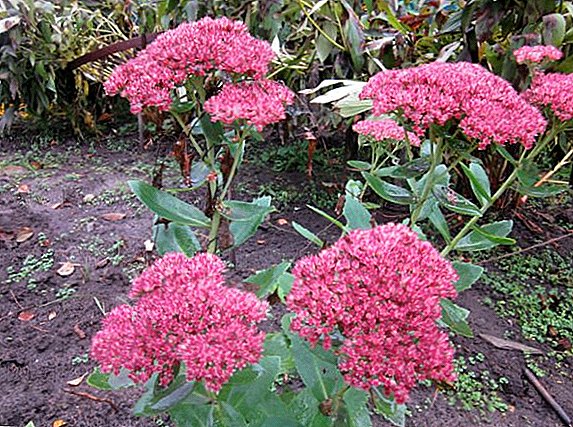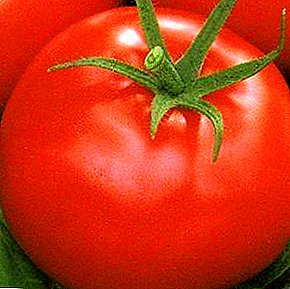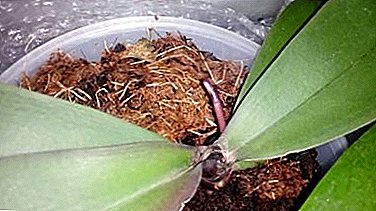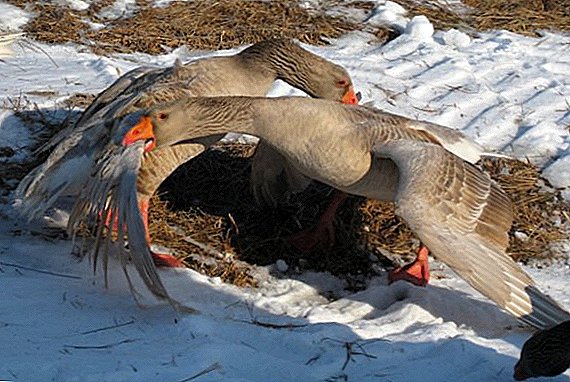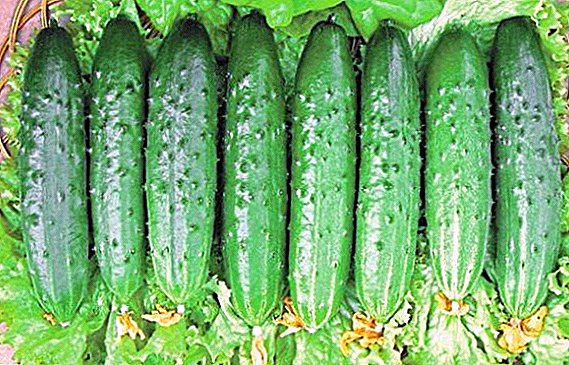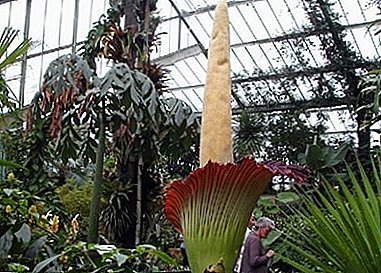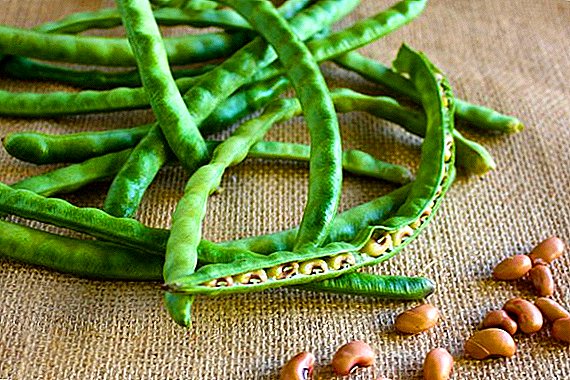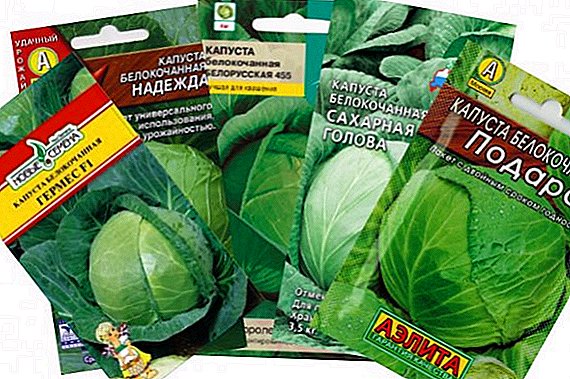 When sowing cabbage seeds for growing seedlings, we hope that the future harvest will be abundant and of high quality, but the opposite may happen. The problem is often not in the quality of the seed, but in non-compliance with the main selection criteria depending on the growing conditions and the characteristics of the variety. Therefore, today we will look at how to choose the cabbage seeds in order to get the desired result.
When sowing cabbage seeds for growing seedlings, we hope that the future harvest will be abundant and of high quality, but the opposite may happen. The problem is often not in the quality of the seed, but in non-compliance with the main selection criteria depending on the growing conditions and the characteristics of the variety. Therefore, today we will look at how to choose the cabbage seeds in order to get the desired result.
Variety or hybrid
The variety is the selection of a selected group of plants, the seed of which can be purchased at a specialized store. Seeds from such plants can be harvested on their own, and the quality of fruiting will remain the same every year as in the first planting of purchased seed.
Did you know? The first mention of the cabbage is the work of the Greek philosopher Evdem. - "Treatise on Herbs", where it is stated that at the time from 4 to 3 thousand BC. er Greeks grew 3 types of cabbage.
The hybrid is obtained by crossing several varieties in order to get better taste, larger size, increased resistance to pests and diseases. It is useless to collect seeds from such plants at home, as they are not capable of reproduction - they must be bought in stores every year.  It is worth noting that both the variety and the hybrid have their advantages and disadvantages, so it is necessary to approach the choice responsibly.
It is worth noting that both the variety and the hybrid have their advantages and disadvantages, so it is necessary to approach the choice responsibly.
The advantages of the variety include:
- unpretentiousness to growing conditions;
- resistance to temperature changes;
- low price and the possibility of self-harvesting seeds for annual cultivation.
By cons include:
- propensity to hereditary diseases;
- poor resistance to fungal and viral diseases;
- yield instability;
- mostly cabbages are not subject to long-term storage;
The advantages of hybrids include:
- high and stable yield;
- maximum resistance to diseases and pests;
- equally large head size;
- excellent taste;
- storage time without changing the appearance and taste.

The disadvantages of hybrids include:
- demanding of soil and weather conditions;
- the need for regular dressings (for high-quality yield);
- fairly high price, given that you need to buy seeds every year.
When selecting seeds, you must also be guided by the characteristics of consumer qualities. For example, varieties of cabbages are best suited for salting, and hybrids are suitable for long-term storage.
We advise you to read what sauerkraut is useful and harmful for, how to sour cabbage quickly at home, and how to make pickles from cabbage for the winter.
Regional affiliation
Each variety and hybrid is created for a specific growing region (or several regions). The seed package contains information on the territory in which they can be planted. If you neglect this advice, it is likely that cabbage will not grow with the characteristics that were indicated.  Depending on the region, the same variety or cabbage hybrid grows differently, has a different ripening period, and the quality characteristics of the heads are different, so in order to get a result as close as possible to the picture and description on the package, carefully study the regional affiliation of the seeds purchased.
Depending on the region, the same variety or cabbage hybrid grows differently, has a different ripening period, and the quality characteristics of the heads are different, so in order to get a result as close as possible to the picture and description on the package, carefully study the regional affiliation of the seeds purchased.
You will probably be interested to read about how to grow cabbage seedlings, and whether it is possible to grow cabbage without picking.
Soil type
As well as the need to select seeds for regional affiliation, it is necessary to take into account the type of soil on which it is recommended to plant the acquired seed. All information on this is indicated on the packaging. This factor is very important, as it directly affects the growth rate, density and size of heads, their taste and storage time.
Important! It is also necessary to take into account the acidity of the soil, since cabbage does not like strongly acidic soil. This factor is not critical and requires only human intervention in the form of proper and timely treatment of the territory.

For cultivation in the open and closed ground it is also recommended to select the appropriate seed. Early head coaches are generally suitable for greenhouse cultivation, and for open field - medium and late ripening.
The mass and shape of the head
The heads of cabbages differ in size, shape and weight, which directly depends on the cabbage variety. Often, early ripe cabbage has a minimum weight that reaches no more than 2.5 kg. Heads of cabbage are not too different in size, although their weight varies and can be about 4 kg, as the leaves are closer to each other.
Many are looking for answers to such questions: how to care for cabbage after planting in open ground, whether it is necessary to cut off the leaves of cabbage, what are the basic rules and norms for watering cabbage, as well as how to fertilize cabbage.The most difficult is late-ripened cabbage, which has a maximum density of leaves, so it can weigh from 2 (the smallest heads of cabbage) to 15 kg.
They distinguish flat, rounded flat, round, conical and oval forms of heads. The shape of the heads does not affect the quality of the product or the duration of storage; it is only a feature of a certain variety. 
Terms of ripening
Varieties of cabbage on maturity are divided into:
- early maturing
- mid-season;
- late ripening
Familiarize yourself with the cultivation technology of such types of cabbage: Beijing, broccoli, cauliflower, kohlrabi, pak-choi, kale, romanesco, red cabbage, savoy.
Early ripe cabbages are grown exclusively for fast consumption, that is, they must be eaten as soon as possible after harvest. Such cabbages are ideal for vitamin salads - the leaves are tender, soft, cabbages loose, have a small weight. The ripening period of early ripe cabbage is about 60-80 days after the appearance of the first shoots.
It is impossible to keep such cabbage: it quickly rots due to the nature of the head of the cabbage, and is also prone to cracking, which only accelerates the deterioration process. For processing, cabbages are also not suitable, and if subjected to heat treatment - cabbage will simply turn into porridge.  Among the popular early ripe varieties emit "Golden hectare", "Zora", "Rosava", "Yaroslavna", "Nakhodka"; and among hybrids - "Aladdin F1", "Westri F1", "Delphi F1", "Transfer F1", "Pharaoh F1", "Express F1".
Among the popular early ripe varieties emit "Golden hectare", "Zora", "Rosava", "Yaroslavna", "Nakhodka"; and among hybrids - "Aladdin F1", "Westri F1", "Delphi F1", "Transfer F1", "Pharaoh F1", "Express F1".
Mid-season cabbages are considered intermediate between early and late varieties. If we compare them with the early ones, then it is necessary to single out a higher yield and a head of cabbage. The period of growth and ripening after the first shoots is about 85-120 days.
The advantage of mid-season cabbage is the possibility of further processing and a longer storage period compared to early ripening.
Among the popular mid-season varieties emit "Gift", "Glory 1305", "Capital", "Belarusian 455", "Brunswick". The popular hybrids include "Rindu F1", "Megaton F1", "Menzu F1", "Hannibal F1", "Hermes F1".  Late cabbage is the most fruitful. It is characterized by a maximum density of heads, thick leaves. Heads of cabbage can be used for processing and consumed fresh.
Late cabbage is the most fruitful. It is characterized by a maximum density of heads, thick leaves. Heads of cabbage can be used for processing and consumed fresh.
Important! A feature of late-ripened cabbage is the least propensity for the accumulation of harmful substances - nitrates, so it can be consumed without concern for health.
Late cabbage has the longest ripening period - about 150 days. Often this period falls in late autumn. Such cabbage is stored very well and for a long time. Under the right storage conditions, the period can be up to 9 months.
Among the most popular late-ripening varieties emit "Kamenka", "Turquoise Plus", "Khalif", "Sugar Loaf", "Snow White"; hybrids include Aros F1, Atria F1, Bartolo F1, Extra F1, Lennox F1.
Yield varieties
Productivity - an important factor in the selection of cabbage seeds. Breeders have always sought to bring the most productive varieties, so almost all of them have high rates, which when buying a hybrid increase even more.  Of course, the desired yield can be obtained only in the case of regular and proper care of the plants: the prerequisite is the constant application of fertilizers and dressings, which is especially important for hybrids.
Of course, the desired yield can be obtained only in the case of regular and proper care of the plants: the prerequisite is the constant application of fertilizers and dressings, which is especially important for hybrids.
The average yield of cabbage from 100 square meters. meters:
- for early maturing - 400 kg (the maximum yield of hybrids - "Dumas F1", "Tobia F1"; the variety "June");

- for mid season - 600 kg (the most fruitful varieties - "Glory 1305", "Dobrovodskaya", "Gift", "Merchant"; hybrids - "Atria F1", "Midor F1", "Megaton F1");

Did you know? Cabbage belongs to cold-resistant crops, which makes it possible to grow it even beyond the Arctic Circle.
- for late maturity - 900 kg (the maximum yield of hybrids - "Aggressor F1", "Amager F1", "Valentine F1", "Kolobok F1"; in varieties - "Mara", "Snow White").
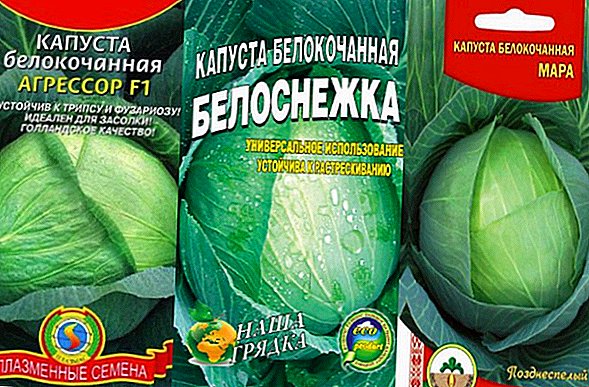
Important! When choosing a seed, pay attention to the packaging: it should contain information about the yield, thanks to which you will select the necessary seed.

Cold resistance
Depending on the variety, they secrete more or less resistant to temperature extremes. It should be noted that varieties are considered to be as resistant to cold as possible, unlike hybrids, therefore, consider this factor when choosing seeds.
Resistance to frost increases depending on the stage of plant development. Cabbage sprouts are the most sensitive to frosts and will die at -3 ° C.
Therefore, if you have acquired a seed, on the package of which it is indicated that the plant can withstand frosts down to -7 ° C, this means that the already mature, mature cabbages can move in the fall to lower temperatures.
It is worth noting that late rips can withstand temperatures as low as -10 ° C, and mid-rides as low as -5 ° C. The most frost-resistant varieties of cabbage include "Wintering 1474", "Geneva", "Aros". Hybrids are not considered resistant to low temperatures. 
Cracking
Very often cabbages crack before maturity, which greatly reduces the duration of their storage, as fungi and viruses quickly develop in a humid environment. To prevent such a situation from occurring, a variety of varieties that are resistant to cracking have been developed.
It is worth noting that early ripe heads of cabbies are more prone to such a problem, if at least a little late with the harvest.
Mid-season cabbages are less susceptible to cracking: among the most resistant varieties distinguish "Elenovskuyu", "Capital". Cracking resistant hybrids - "Satellite F1", "Hinova F1", "Parel F1".
Late ripening, if you observe the recommended harvest period, are considered the most resistant to cracking. The most stable include varieties "Gift", "Rusinovka", hybrids "Bingo F1", "Galaxy F1", "Tranz F1". 
Transportability
Transportability is an important criterion for selecting seeds, especially if it is planned to grow cabbage for sale, or the cottage with a garden is far enough, because cabbage must be transported after harvest. The best transportability is possessed by late rips; good - middle ripening; bad - early ripe.
The varieties with the best manifestation of the characteristics under consideration include “Stone Head”, “Gift”, “Yaroslavna”, “Tyurix”, “Kharkiv Winter”, “Snow White”, “Belorusskaya 455”, “Biryuzu”. The hybrids with good transportability include "Atria F1", "Latima F1", "Dawn F1", "Transfer F1", "Kazachok F1".
Storage time
The shelf life of cabbage depends on whether varieties and hybrids have good keeping quality. Heads with a long storage period are less juicy, contain a lot of fiber, dense and large veins. Late-ripening varieties often possess such characteristics.  Also, the shelf life depends on the growing conditions, the timely harvest and the conditions in which the crop will be stored. Early ripening cabbage is not stored for more than 1 month, so a leader cannot be distinguished.
Also, the shelf life depends on the growing conditions, the timely harvest and the conditions in which the crop will be stored. Early ripening cabbage is not stored for more than 1 month, so a leader cannot be distinguished.
Mid-season cabbies can last no more than 4 months: “Sugar head”, “Gift”, “Nadezhda”, “Belorusskaya 455” can be referred to the varieties with the best keeping quality; to hybrids - "Krautman F1", "Tobia F1", "Hermes F1". 
Late rips are stored much longer - up to 9 months. The following varieties can be attributed to them: Moscow Late 15, Wintering 1474, Amager 611, Geneva, Amager, Krümon, and Turkiz. Hybrids with a maximum shelf life: "Prestige F1", "Atria F1", "Aros F1", "Extra F1", "Lennox F1". 
Disease and Pest Resistance
As you know, cabbage is often exposed to diseases and pests that cause rotting, cracking, molding of heads.
Among the most common diseases are:
- dry rot;
- mucous bacteriosis;
- vascular bacteriosis;
- Alternaria;
- botritis;
- kela;
- rhizoctoniosis;
It will be helpful for you to read about how to treat and prevent cabbage diseases.

Important! When selecting seeds, pay attention to the information on the resistance of the variety or hybrid to the above diseases and pests.
The main pests of cabbage include:
- cabbage fly;
- cabbage aphid;
- cabbage soup;
- Medvedka;
Thanks to the selection and breeding of new varieties and hybrids, new, more resistant to diseases and pests specimens were created, which greatly improves the quality of the crop and the duration of its storage.
Among the most stable hybrids are "Kolobok F1", "Kazachok F1", "Tobia F1", "Glory 1305", "Atria F1", "Krautman F1", "Megaton F1". Resistant varieties include the “Tradeswoman”, “Snow White”, “Dobrovodskaya”, “Gift”.
Quality certificate
Documents confirming the quality of the seeds must be in the store where they are sold.  Each variety or hybrid has its own certificate of quality, which confirms that this seed has been produced in proper isolation with observance of the varietal purity and varietal characteristics of vegetative plants, and has also been tested and meets all the characteristics of the declared variety.
Each variety or hybrid has its own certificate of quality, which confirms that this seed has been produced in proper isolation with observance of the varietal purity and varietal characteristics of vegetative plants, and has also been tested and meets all the characteristics of the declared variety.
Buy only certified goods - this is a guarantee that you will not be sold a fake or doubtful "new" varieties or hybrids. Thus, choosing the cabbage seeds is necessary as responsibly as possible if you plan to get a large, high-quality crop that will be stored for a long time.
In order to ensure that the procedure for selecting a seed material is fast and efficient, pay attention to the main selection criteria, which are described in detail in this article.





